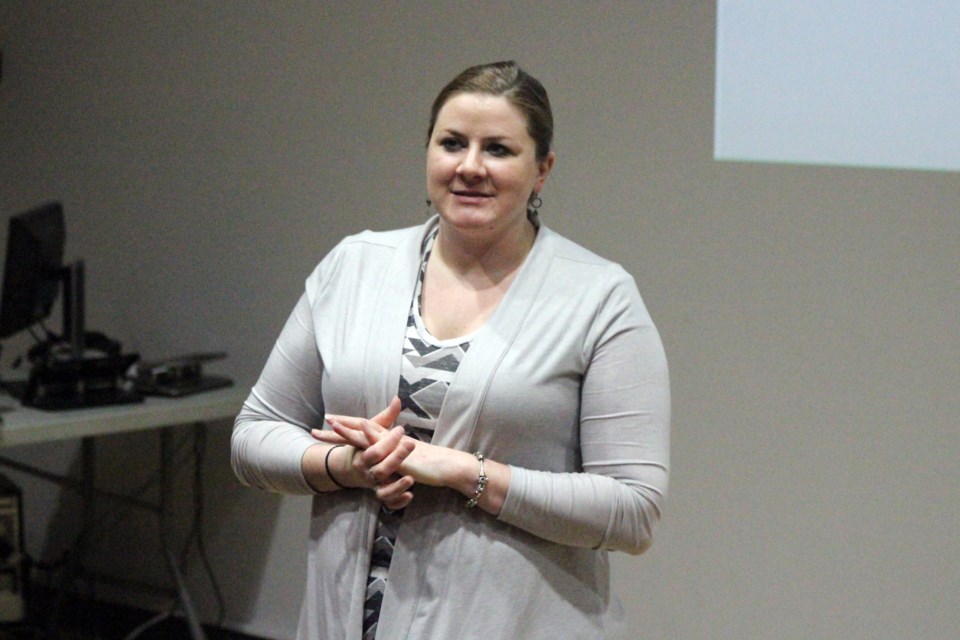BONNYVILLE – The Moose Lake Watershed Society (MLWS) has been hard at work improving the quality of the local water body, and they aren’t slowing down anytime soon.
During their annual general meeting at the Bonnyville and District Centennial Centre on Thursday, Feb. 20, the MLWS highlighted what they’ve accomplished over the past year and their plans for 2020.
Among the projects they completed were two shoreline clean ups, which happened in May and September.
“We had a large item clean up (first),” explained Kellie Nichiporik, chair for the MLWS. “People could take out boat launches that were broken from all the flooding and any kind of big (items). We also did one later where there was only seven of us out there picking garbage for two hours and we filled two garbage dumpsters. You can tell there are areas of our watershed that need a lot more attention and clean up.”
The MLWS partnered with the Lakeland Industry and Community Association (LICA) for the Keep Our Lake Blue campaign. The local initiative was aimed at getting residents involved in decreasing the phosphorous levels in Moose Lake.
“Residents could help prevent phosphorous blooms by reducing run-off pollutants on their property,” noted Lisa Gander, education and outreach coordinator for LICA.
Homeowners were asked to take one action to help improve the health of the lake over the summer, such as changing their watering schedule, not cutting their grass too short, skipping chemical fertilizers, and using less pesticides.
Examining the external load of phosphorous in the watershed through tributary sampling was another activity on the docket for the society. Water samples were taken from Moose Lake River, Thin Lake River, Yelling Creek, and Vincent Creek, among others. This is a program they’ve had in the works since 2014.
“(The results) are comparable to what we’ve been seeing in 2017. The water was really clear this year, so our carbon rates were fairly low,” noted Nichiporik.
The Alberta Lake Management Society (ALMS) has also been taking water samples from Moose Lake. Brad Peter, executive director for ALMS, said they have a better understand of different basins in the lake due to previous studies they’ve completed.
“We’ve at least validated people’s observations around how different parts of Moose Lake behave. It’s really interesting to see that most of the phosphorous is happening at Vezeau bay, because that’s generally where we have the best water clarity conditions.”
After receiving funding from the MD of Bonnyille, the MLWS collected core samples from Moose Lake over the summer to determine the internal loading levels of phosphorous and how it could be impacting the water quality.
“What they concluded out of the sampling they did was roughly just over 14,000-kilograms of available phosphorous is at the bottom of the lake that gets released every year, and that’s what’s driving the algae blooms,” Nichiporik explained.
All of the information is being gathered to create a nutrient budget to get a better idea of where else the phosphorous, which has been known to cause the lake’s blue-green algae problems, is coming from.
Nicole Kimmel, aquatics invasive species specialist with Alberta Environment and Parks, gave a presentation outlining what the province is doing to prevent invasive species from damaging Alberta lakes.
Ensuring the province remains free of invasive species, such as zebra and quagga mussels, is a top priority for Kimmel’s unit.
“Only British Columbia and Alberta have a robust program that we feel confident that we don’t have invasive mussels. Saskatchewan doesn’t have mussels, but they have a weak program, so we don’t believe them,” she noted. “Just by default, we treat them as a high risk.”
The province made it mandatory for boat owners entering Alberta to stop at a watercraft inspection station in 2015.
“A fish and wildlife officer can detain you, and we can detain you. If we need to decontaminate it, we have the power to do that,” Kimmel detailed, adding 2018 saw the addition of financial penalties for those who try to avoid inspection sites.
“Much like a speeding ticket, an officer can pull you over and give you a $310 fine for bypassing an open watercraft inspection station with a watercraft, and we can give you a $172 fine for failure to pull the plug when transporting your boat around.”
The MLWS hit the ground running in 2020. They’re in the process of applying for grants to assist with the costs of the Keep Our Lake Blue campaign and nutrient budget for Moose Lake. They’re also continuing to offer their Walking with Moose program, which is available for local schools to take a day out in nature to learn about the watershed.



